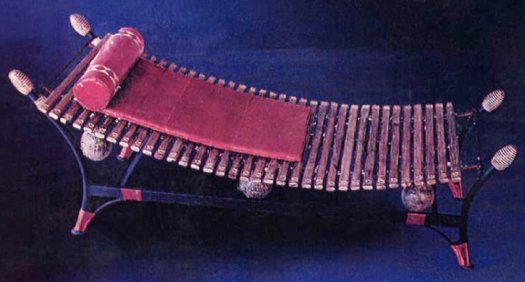ONE
Royal Festival Hall, London, 2005
ANO’s first exhibition ONE took place in 2002 for the Liverpool Biennial. Curator Nana Oforiatta Ayim noticed how art or culture, especially in her hometown of Kyebi, was not seen as something discrete or separate, to be regarded in specially walled off spaces, but as something immersive, and part of life, and dynamic.
Bringing this porousness into the first exhibition, not just in its content, but also its form. There was research about various architectural spaces in Ghana, and the exhibition was intended to recreate the historical structure of Akan (my ethnic group) architecture, which centered around a courtyard, and where each room had a function, whether it was for recreation or spiritual meditation.
Akan courtyard
In the middle of the courtyard, there was always what is called a Nyame Dua, a tree that connects you and the household with the Divinity with the past, present, and future. The structures of an Akan courtyard were reconstructed into a warehouse in Liverpool, and in the middle placed El Anatsui’s wooden sculpture ‘Akua ba’, made up of driftwood and a monument to the children of ‘Akua’ shipped off to slavery, some of whom where forever lost out at sea, was especially poignant in the context of Liverpool’s historical ties to the slavery industry.
El Anatsui – Akua ba
In the other rooms, hung paintings by Owusu Ankomah, and video works by Mawuli Afatsiawo, with specially commissioned furniture by Selassie Tetevie, as well as bottles of palm wine, so that the artwork formed not a backdrop, so much as a context for conversation.
Owusu Ankomah
Selassie Tetevie
In what was historically, the ‘spirit room’ Panji Anoff of Pigin Music, and Nii Noi Nortey had created a soundtrack, and musical instruments were brought from Ghana, so that people could spend time in what proved to be the most popular space in the exhibition.
Panji Anoff & Nii Noi Nortey
Marigold Akufo-Addo, created a backdrop inspired by the backdrops used by photographers, in Ghana, and across West Africa for their subjects, and Araba Hackman designed a collection of clothes for women and men, and visitors to the exhibition were able to take polaroids dressed in the clothes, in front of the backdrop.
Araba Hackman
The idea of the exhibition was to be immersive and not detached, to bring a multi-dimensional experience of Ghana and its culture into a warehouse space in Liverpool.
Artists:
Mawuli Afatsiawo
Marigold Akufo-Addo
El Anatsui
Owusu Ankomah
Panji Anoff
Araba Hackman













